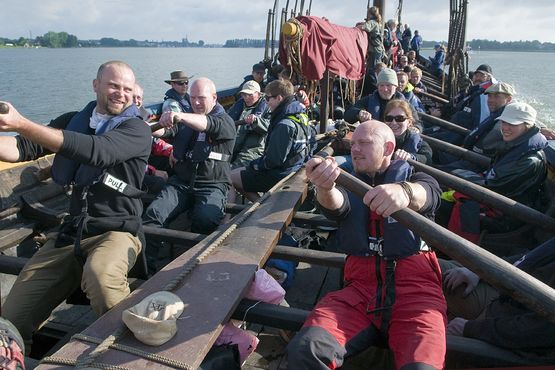The longships were designed to transport a large crew – in times of war an armed crew – swiftly and as fast as possible (both sail and oars where necessary). In wartime, longships were powerful tools in amphibious warfare, landing warriors ready to be deployed.
The longship design – long and with a narrow beam – makes communication difficult. The Norwegian law text, Gulatingsloven, describes, in detail, the organisation and the need for discipline on board (Gulatingslovi: 268-284).
Sailing a full-scale reconstruction of a longship may lead to communication issues on board just as when they were operated in the 11th century. In my week of sailing as a crewmember on the Sea Stallion from Glendalough I hope to elucidate the following issues:
· Problems of communication on board a longship.
· How the problems of communication are met and dealt with on board the Sea Stallion from Glendalough. Is it likely that the chosen solutions could have been utilized in the late Viking Age?
· The dialectic interaction between the limits/possibilities for communication and the way the communities of practice are organised (for example, how the foreship can communicate with the aftship or how those on the aft braces communicate with those on the mid-sheet).
Literature cited
Falk, H. [1912] 1995. Fornnordisk sjöfart. Oversättning av Bo Varenius. Skärhamn: Båtdokgruppen.
Gulatingslovi. Umsett av Knut Robberstad. Fjerde utgåva 1981. Oslo: Det norske samlaget.
Jesch, J. 2001. Ships and Men in the Late Viking Age. The Vocabulary of Runic Inscriptions and Skaldic Verse. Woodbridge: Boydell Press.
